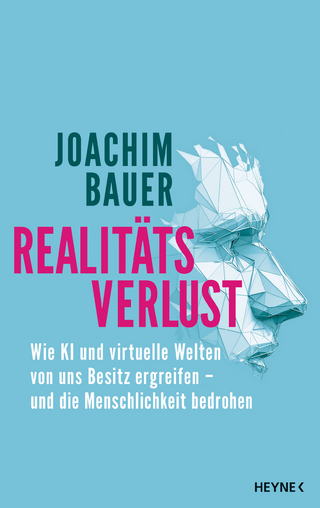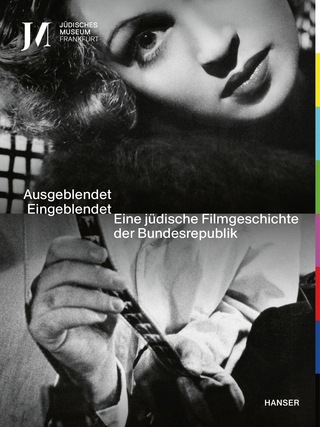
Cinematography of Carl Theodor Dreyer
Fairleigh Dickinson University Press (Verlag)
978-1-68393-100-3 (ISBN)
Legendary Danish filmmaker Carl Theodor Dreyer (3 February 1889-20 March 1968) was born in Copenhagen to a single mother, Josefine Bernhardine Nilsson, a Swede. His Danish father, Jens Christian Torp, a married farmer, employed Nilsson as a housekeeper. After spending his first two years in orphanages, Dreyer was adopted by Carl Theodor Dreyer, a typographer, and his wife, Inger Marie Dreyer. He was given his adoptive father’s name. At age 16, he renounced his adoptive parents and worked his way into the film industry as a journalist, title card writer, screenwriter, and director. Throughout his career he concealed his birth name and the details of his upbringing and his adult private life, which included a period in which he explored his homosexual orientation and endured a nervous breakdown. Despite his relatively small output of fourteen feature films and seven documentary short films, 1919-64, he is considered one of the greatest filmmakers in history because of the diversity of his subjects, themes, techniques, and styles, and the originality of the bold visual grammar he mastered. In Cinematography of Carl Theodor Dreyer: Performative Camerawork, Transgressing the Frame, I argue: 1) that Dreyer, an anonymous orphan, an unsourced subject, manufactured his individuality through filmmaking, self-identifying by shrouding himself in the skin of film, and 2) that, as a screenwriter-director who blocked entire feature films in his imagination in advance—sets, lighting, photography, shot breakdowns, editing—and imposed his vision on camera operators, lighting directors, actors, and crews in production, he saw filmmaking essentially as camerawork and he directed in the style of a performative cinematographer.
Paul Matthew St. Pierre is a retired professor from the Department of English at Simon Fraser University.
Acknowledgments
Chapter One: Carl Theodor Dreyer, Transnationalism, and the Visual Grammar of His Films
Chapter Two: Film Direction as Cinematography by Proxy: The Visual Aesthetics of Carl Theodor Dreyer
Chapter Three: Dreyer’s Incipient Style, Actors as Surrogate Orphans, Film Stock as Skin: Præsidenten, Prästanken, and Blade af Satans Bog
Chapter Four: Dreyer’s Optical Center: The Focal Length of History in Elsker Hverandre (Die Gezeichneten) and Der Var Engång
Chapter Five: Prohibitions Against Love: Dreyer’s Gender Transgressions and the Transverse Frame in Mikaël
Chapter Six: Dreyer’s Angle-Reverse-Angle Perspectives on the Action Field of Internalized Space in Der Skal aere din Hustru
Chapter Seven: The Dissentient Camera in Glomdalsbruden, Dreyer’s Adventure in Improvisational Filmmaking
Chapter Eight: Still Point, Turning World: Dreyer’s Close-Ups and Camera Movement in La passion de Jeanne d’Arc
Chapter Nine: Dreyer’s Aberrant Sympathetic Camera Movement as Performative: The Perspectivity of Vampyr
Chapter Ten: Maxims and Minims of Camera Mobility: Dreyer’s Performative Cinematography in Vredens Dag
Chapter Eleven: Angles of View, Fields of Action, and the Avant-Garde in Två Människor and Ordet
Chapter Twelve: Disruptive Two Shots, Dirty Singles, and Dreyer’s Transgression of the Field Size in Gertrud
Conclusion: The Avant-Garde Cinematography of Carl Theodor Dreyer: His Contributions to Cinema
Filmography
Works Cited
Index
About the Author
| Erscheinungsdatum | 07.12.2018 |
|---|---|
| Verlagsort | Cranbury |
| Sprache | englisch |
| Maße | 159 x 230 mm |
| Gewicht | 635 g |
| Themenwelt | Kunst / Musik / Theater ► Film / TV |
| Sozialwissenschaften ► Kommunikation / Medien ► Medienwissenschaft | |
| ISBN-10 | 1-68393-100-9 / 1683931009 |
| ISBN-13 | 978-1-68393-100-3 / 9781683931003 |
| Zustand | Neuware |
| Haben Sie eine Frage zum Produkt? |
aus dem Bereich


